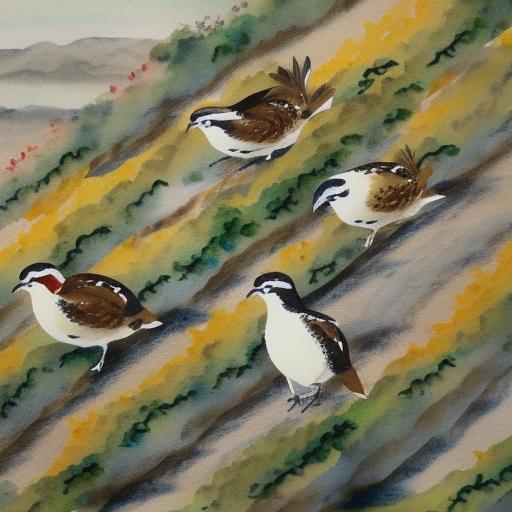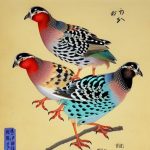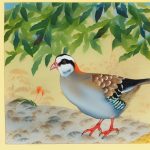The breeding season of Japanese quail, also known as Coturnix japonica, typically occurs during the warmer months of the year, from spring to early autumn. This period is characterized by an increase in daylight hours, which triggers hormonal changes in the quail, leading to the onset of breeding behavior. Japanese quail are known for their prolific breeding capabilities, with females capable of laying an egg almost every day during the peak of the breeding season. Understanding the breeding season of Japanese quail is essential for successful breeding and management of these birds.
During the breeding season, male Japanese quail become more vocal and aggressive as they compete for the attention of females. They will often engage in courtship displays, such as puffing out their feathers, bobbing their heads, and making distinctive calls to attract a mate. Female quail will also display receptive behavior, such as crouching and presenting their backs to the males. It is important for quail breeders to be aware of these behaviors and to provide the appropriate conditions for successful breeding during this time.
Key Takeaways
- Japanese quail breeding season is influenced by factors such as temperature, light, and nutrition
- Breeding behavior of Japanese quail includes courtship displays and vocalizations
- Japanese quail typically lay eggs in secluded areas and prefer dark, quiet nesting spaces
- Incubation period for Japanese quail eggs is around 17 days
- Proper care and management of Japanese quail during breeding season is crucial for successful breeding
Factors Affecting the Breeding Season of Japanese Quail
Several factors can affect the breeding season of Japanese quail, including environmental conditions, nutrition, and the age and health of the birds. The length of daylight hours is a crucial factor that triggers the breeding season in quail. As the days become longer during the spring and summer months, it signals to the quail that it is time to breed. Therefore, providing artificial lighting in the quail housing facilities can help stimulate breeding activity during the off-season.
Nutrition also plays a significant role in the breeding season of Japanese quail. A well-balanced diet that is high in protein and essential nutrients is essential for reproductive success. Inadequate nutrition can lead to poor egg production and fertility issues. Additionally, the age and health of the quail can impact their breeding capabilities. Young, healthy birds are more likely to engage in successful breeding behavior compared to older or sickly birds. Therefore, it is important for quail breeders to provide optimal living conditions and a nutritious diet to ensure a successful breeding season.
Breeding Behavior and Courtship of Japanese Quail
The breeding behavior and courtship displays of Japanese quail are fascinating to observe and play a crucial role in the reproductive success of these birds. During the breeding season, male quail will engage in elaborate courtship displays to attract females. These displays often involve puffing out their feathers, bobbing their heads, and making distinctive calls to signal their readiness to mate. The males will also engage in aggressive behavior towards rival males as they compete for the attention of females.
Female quail will display receptive behavior by crouching and presenting their backs to the males. This posture indicates their willingness to mate and allows the male to mount them for copulation. It is essential for quail breeders to be familiar with these courtship behaviors to ensure that mating occurs successfully. Providing a suitable environment with ample space and privacy for the birds can help facilitate natural courtship and mating behaviors.
Nesting and Egg-Laying of Japanese Quail
Once mating has occurred, female Japanese quail will begin to seek out suitable nesting sites to lay their eggs. In a domestic setting, it is important to provide nesting boxes or areas with suitable nesting materials, such as straw or shredded paper, to encourage the females to lay their eggs in a designated location. Female quail are prolific layers, capable of laying an egg almost every day during the peak of the breeding season.
The eggs laid by Japanese quail are small and speckled, typically measuring around 2-3 centimeters in length. They are usually laid in the early morning hours and are often found in clusters within the nesting area. It is important for quail breeders to regularly collect the eggs to prevent them from being damaged or eaten by the birds. Proper egg collection and handling are essential for maintaining egg quality and maximizing hatchability.
Incubation and Hatching of Japanese Quail Eggs
After the eggs have been laid, they can either be collected for consumption or placed in an incubator for hatching. Japanese quail eggs have a relatively short incubation period of around 17-18 days. During this time, it is crucial to maintain optimal temperature and humidity levels in the incubator to ensure successful hatching.
Once the eggs have hatched, the chicks will require careful attention and care to ensure their survival. They should be provided with a warm, draft-free environment and access to fresh water and high-quality chick starter feed. Proper brooding management is essential for promoting healthy growth and development in the young quail.
Care and Management of Japanese Quail during the Breeding Season

During the breeding season, it is important to provide optimal care and management for Japanese quail to ensure their reproductive success. This includes providing a well-balanced diet that is high in protein and essential nutrients to support egg production and fertility. Additionally, maintaining a clean and comfortable living environment is crucial for minimizing stress and promoting healthy breeding behavior.
Regular monitoring of the birds for signs of illness or injury is essential during the breeding season. Sick or injured birds should be promptly isolated and provided with appropriate veterinary care to prevent the spread of disease within the flock. Proper record-keeping of breeding activities, such as egg production and fertility rates, can also help identify any potential issues and guide management decisions.
Tips for Successful Breeding of Japanese Quail
To ensure successful breeding of Japanese quail, there are several tips that can be followed by quail breeders. Providing a suitable environment with ample space, privacy, and nesting areas can help facilitate natural breeding behaviors in the birds. Additionally, maintaining optimal nutrition and health care practices is essential for promoting reproductive success.
It is also important to monitor environmental conditions, such as lighting and temperature, to stimulate breeding activity during the off-season. Regularly collecting and handling eggs with care can help maintain egg quality and maximize hatchability. Finally, proper care and management of young chicks are crucial for ensuring their healthy growth and development.
In conclusion, understanding the breeding season of Japanese quail and implementing appropriate management practices are essential for successful breeding and reproductive success in these birds. By providing optimal living conditions, nutrition, and health care, quail breeders can promote natural breeding behaviors and maximize egg production and hatchability. With careful attention to detail and proper management practices, successful breeding of Japanese quail can be achieved.
If you’re interested in learning more about the breeding season of Japanese quail, you might also want to check out this insightful article on whether quails sit on their eggs. Understanding the behavior of quails during the breeding process can provide valuable insights for successful breeding and hatching.
FAQs
What is the breeding season for Japanese quail?
The breeding season for Japanese quail typically occurs during the spring and summer months, when the days are longer and the temperatures are warmer.
How long does the breeding season last for Japanese quail?
The breeding season for Japanese quail can last for several months, typically from March to August, depending on the specific environmental conditions and the health of the quail.
What are the signs that Japanese quail are ready to breed?
Signs that Japanese quail are ready to breed include increased vocalization, courtship behavior, and the formation of mating pairs. Female quail may also exhibit nesting behavior and begin laying eggs.
How can I encourage breeding in my Japanese quail flock?
To encourage breeding in Japanese quail, provide a suitable breeding environment with ample space, proper nutrition, and appropriate lighting. Ensuring that the quail are healthy and stress-free can also encourage breeding behavior.
What should I consider when breeding Japanese quail?
When breeding Japanese quail, it is important to consider factors such as genetics, age, and overall health of the quail. Additionally, providing a suitable nesting area and monitoring the breeding pairs can help ensure successful breeding.
Meet Walter, the feathered-friend fanatic of Florida! Nestled in the sunshine state, Walter struts through life with his feathered companions, clucking his way to happiness. With a coop that’s fancier than a five-star hotel, he’s the Don Juan of the chicken world. When he’s not teaching his hens to do the cha-cha, you’ll find him in a heated debate with his prized rooster, Sir Clucks-a-Lot. Walter’s poultry passion is no yolk; he’s the sunny-side-up guy you never knew you needed in your flock of friends!







